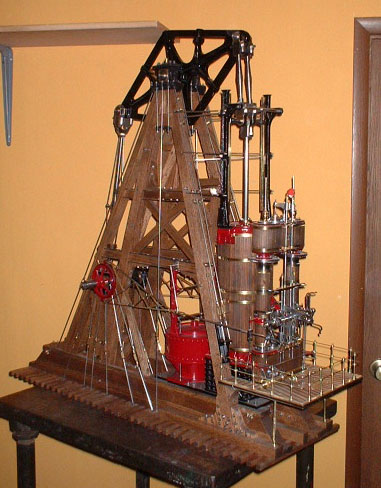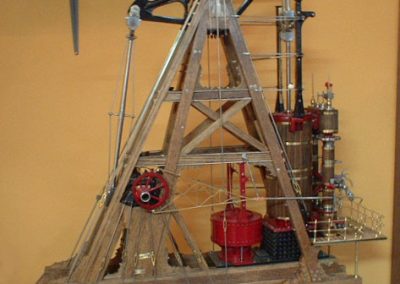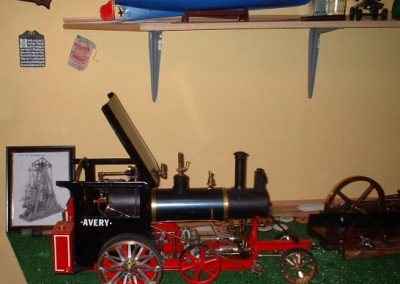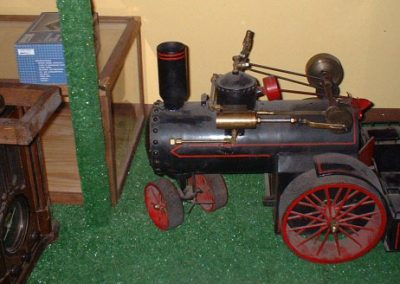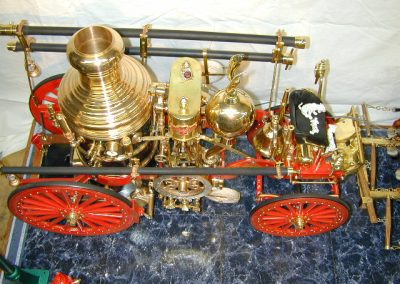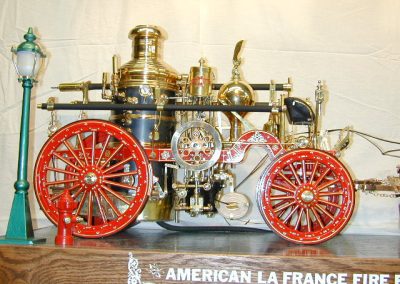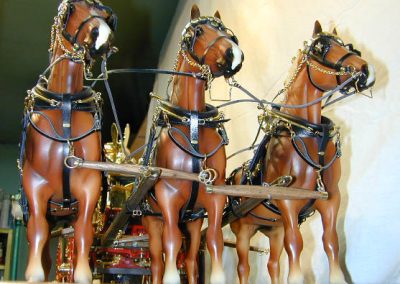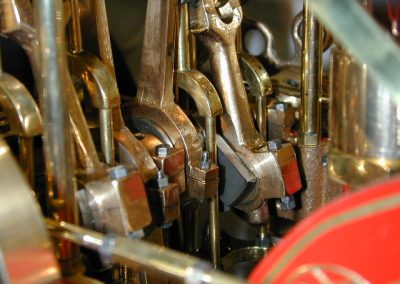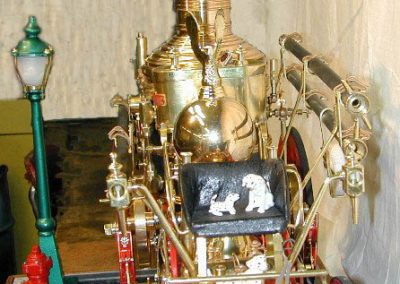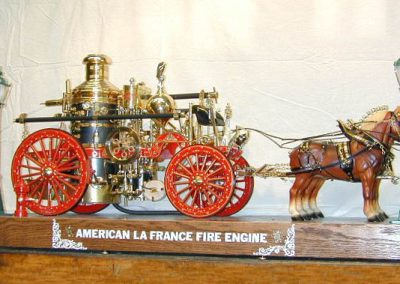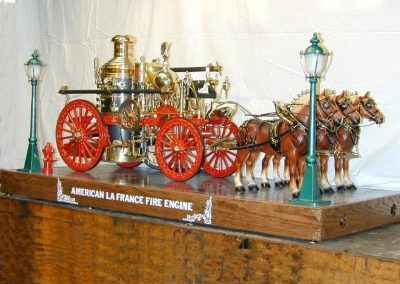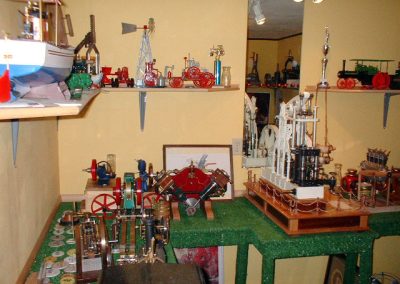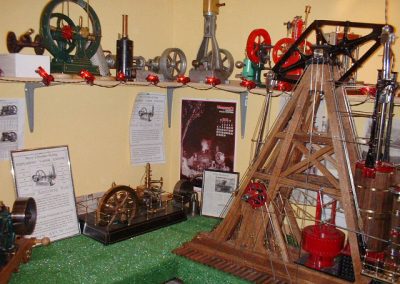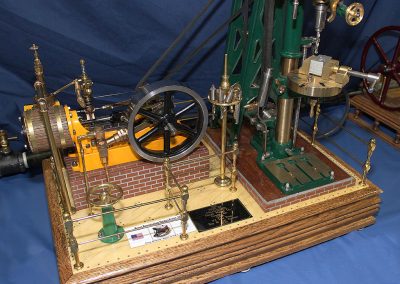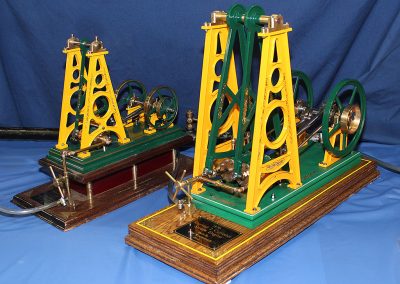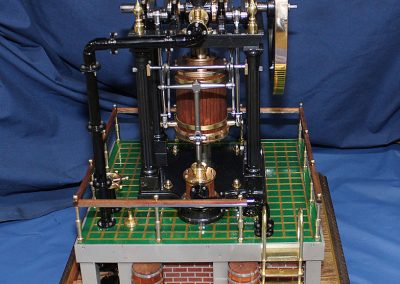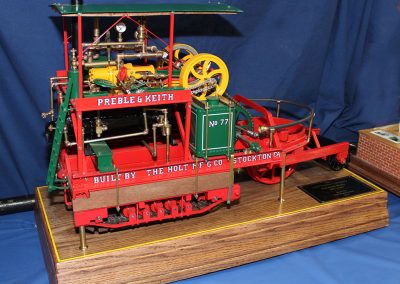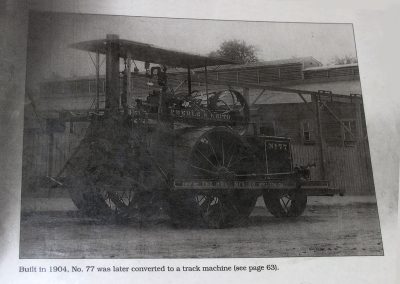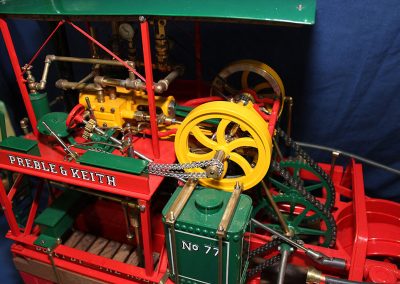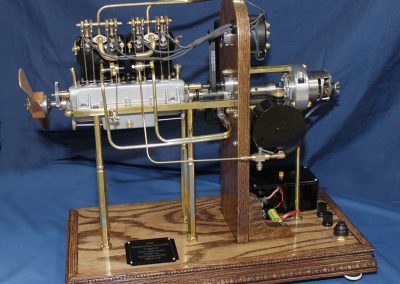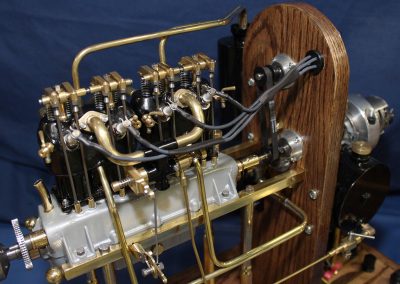Below you can view more photos of Clif Roemmich’s model engineering. Click on images to enlarge.
Scale Model Engines
Sidewheel Ship Steam Engine
Clif built this sidewheel ship steam engine based on an American design. The castings are iron, and the wood is oak. This is Clif’s favorite engine.
Sidewheel Ship Steam Engine
Construction to this point required 650 hours of labor. Clif estimated that the paddlewheel would take an additional 300 hours.
Model Avery Steam Tractor
After seeing a full-size Avery, Clif was very impressed by the majestic power of the machine. He collected photos of Avery steamers for many years, planning the model in his head. He built this scale version without prints or drawings. Although, he did use a large picture of an Avery to measure for scale.
Model Steam Tractor
This was the first model steam tractor that Clif built. He made the engine, without drawings or prints, around 1971. At that point, Clif did not have a lathe, so the engine was built with hand tools, a bandsaw, and a drill press.
Model American LaFrance Fire Engine
A scale model American La France fire engine from 1890. Clif completed this project in May 2004. The castings are from Coles Power Models, and the engine has a functional steam boiler.
Model American LaFrance Fire Engine
The aluminum wheel castings were pretty rough, and hard to work with. Each wheel required about 4 hours of work to prepare for paint. Clif used automotive grade self-etching primer on the aluminum parts to get the paint to stick.
Model American LaFrance Fire Engine
Clif’s scale fire engine is also horse-drawn. The horses were made by Stone Company, and Clif had the leather harness gear custom made by D&H Custom Designs in Garner, Iowa. Harold Bulmer and his wife, the owners of D&H, built the harness from scratch, and the quality is first-rate.
Model American LaFrance Fire Engine
The two-cylinder double-acting pump is powered by a 2-cylinder steam engine.
Model American LaFrance Fire Engine
The brass bulb (accumulator) and brass boiler smoke stack were both turned on the lathe with hand tools. The hand tools were made from old screwdrivers with carbide inserts silver-soldered on.
Model American LaFrance Fire Engine
The total model with horses is 44 inches long, 18 inches high, and weighs 100 lbs. Clif built it for his son, a full-time firefighter, and daughter-in-law, a volunteer firefighter.
Model American LaFrance Fire Engine
The engine and horses are displayed with miniature street lights and a fire hydrant.
Scale Model Engines on Display at the 2016 NAMES Expo
1/4 Scale 1899 Camelback Drill Press
Camelback drills turn much slower than modern drill presses. This slower drill speed greatly extends drill bit life by reducing the heat build-up. They also operate much more quietly and smoothly compared to modern drill presses, thus reducing operator fatigue. They were built to last a lifetime, and this they certainly did. Many Camelbacks outlived their original owners, and continue to serve multiple generations of metalworkers today.
M’ De Polighnac’s Curved Cylinder Steam Engine (Right)
Built in 1870, the original engine had 6 horsepower, and ran at 500-750 rpm. That was very fast for the period. The engine was used to power woodworking machines.
1841 Johann Bodmer Sliding Cylinder Steam Engine
Mr. Anthony Mount developed the plans for this engine following the basic design of the original drawings.
1904 Holt #77 Steam Tractor
This tractor marked the beginning of the use of tracked vehicles for farming and construction. It was later made popular by Caterpillar.
Original Holt Steam Tractor
The Holt tractor was first built with steel wheels, as shown in this photo. It was later converted from steel rear wheels to a track type drive. This was done to test the use of tracks when working soft ground in the San Joaquin Valley of California

